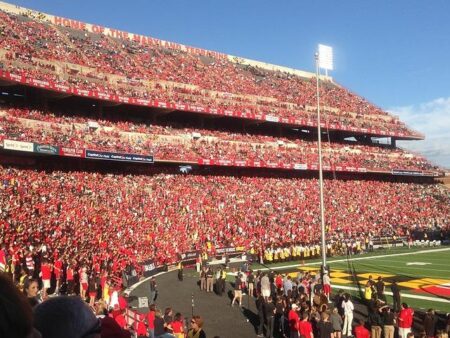In recent years, the landscape of college sports has undergone a seismic shift with the advent of Name, Image, and Likeness (NIL) rights, allowing student-athletes to profit from their personal brands for the first time. This groundbreaking change has transformed recruiting dynamics, athlete compensation, and the broader business of collegiate athletics. However, as schools navigate this new terrain, several programs have come under federal and NCAA scrutiny amid allegations of improper benefits and regulatory violations linked to NIL deals. This article explores what NIL entails, how it has reshaped college sports, and why some institutions now find themselves at the center of investigations.
What is NIL and How It Transformed Athlete Compensation in College Sports
The introduction of Name, Image, and Likeness (NIL) rights in college sports has revolutionized how student-athletes can monetize their personal brands. For decades, NCAA regulations prohibited athletes from earning money off their athletic identity, reserving compensation strictly for scholarships and stipends. However, recent policy shifts now allow athletes to engage in sponsorship deals, social media endorsements, and personal appearances without jeopardizing their amateur status. This change has created unprecedented opportunities, enabling athletes-especially those in high-profile sports like football and basketball-to generate substantial income during their collegiate careers.
While NIL has empowered many athletes, it has also introduced complexity and scrutiny in the collegiate sports ecosystem. Schools and conferences are navigating an evolving landscape marked by varied compliance standards and concerns over equity and fairness. Key issues under investigation include:
- Potential recruiting violations: Allegations that some programs may leverage NIL deals to attract talent unfairly.
- Payment transparency: Difficulty in tracking the flow of money between athletes, agents, and third-party endorsers.
- Impact on team dynamics: Questions about how disparities in NIL earnings affect athlete relationships and locker room culture.
| Factor | Pre-NIL Era | Post-NIL Era |
|---|---|---|
| Compensation | Indirect (scholarships only) | Direct earnings from endorsements |
| Compliance Complexity | Relatively straightforward | Heightened monitoring needed |
| Recruiting | Strictly regulated | New avenues for influence |
The Impact of NIL on Recruitment, Competition, and Athlete Empowerment
The introduction of NIL (Name, Image, and Likeness) policies has radically transformed the recruitment landscape in college sports. Programs now compete not only on athletic prestige and academic offerings but also on their ability to connect athletes with lucrative endorsement deals and branding opportunities. This shift has intensified recruitment battles, as schools with stronger marketing partnerships and local business connections can offer athletes unparalleled exposure and financial backing from day one. Coaches are adapting strategies to emphasize an athlete’s marketability alongside traditional metrics like skill and potential – a dynamic that was previously absent from the recruitment equation.
Beyond recruitment, the NIL era has empowered athletes in unprecedented ways, enabling them to directly benefit from their personal brands and hard-earned talent. This newfound autonomy has sparked debate about competitive balance, as disparities in sponsorship access can widen gaps between programs. However, the empowerment extends beyond finances:
- Increased agency: Athletes negotiate deals and manage personal brands, gaining valuable business skills.
- Amplified voices: NIL deals provide platforms for athletes to advocate social causes and build community influence.
- Enhanced career prospects: Real-world experience in marketing and endorsements prepares athletes for life after sports.
| Impact Area | Before NIL | After NIL |
|---|---|---|
| Recruitment Focus | Athletic potential | Athletic + Marketability |
| Athlete Compensation | Scholarships only | Endorsements + Sponsorships |
| Competitive Balance | More uniform | Varies with market access |
| Athlete Empowerment | Limited control | Full brand ownership |
Investigations Surrounding NIL Deals and Compliance Challenges in NCAA
Since the NCAA’s historic shift to allowing athletes to monetize their Name, Image, and Likeness (NIL), compliance oversight has become a complex battleground. Schools nationwide face intense scrutiny from federal and state authorities aiming to uncover potential violations of NIL regulations, which often blur the lines between legitimate endorsement deals and improper benefits. Investigations have uncovered cases involving undisclosed payments, preferential treatment, and third-party intermediaries funneling money to athletes, raising questions about the integrity of college sports recruitment and eligibility standards.
The challenges institutions encounter are compounded by a patchwork of state laws and evolving NCAA guidelines, making consistent enforcement difficult. Key compliance challenges driving investigations include:
- Lack of transparency in NIL contract disclosures
- Conflicts of interest between boosters and school representatives
- Undocumented or improperly valued endorsements
- Potential influence on recruiting practices
Below is a brief summary of investigation focal points across several major conferences:
| Conference | Common Investigation Issues | Status |
|---|---|---|
| SEC | Unreported endorsements, booster involvement | Ongoing |
| Big Ten | Third-party agent payments | Under Review |
| Pac-12 | Recruiting inducements linked to NIL deals | Investigative Stage |
| ACC | Discrepancies in contract valuations | Ongoing |
Recommendations for Transparency and Accountability in College Sports Governance
To restore trust and ensure ethical management within college sports, institutions must adopt robust frameworks emphasizing transparency and accountability. This includes implementing clear financial disclosures related to Name, Image, and Likeness (NIL) deals, publicizing contract terms where applicable, and routinely auditing all endorsements and payments tied to student athletes. Regular reporting mechanisms should be standardized across conferences and schools to track compliance, reducing opportunities for undisclosed or unethical transactions.
Furthermore, governing bodies need to establish independent oversight committees with diverse representation-including athletes, legal experts, and educators-to evaluate NIL activities and enforce compliance. Encouraging open communication channels where athletes and staff can confidentially report irregularities will foster a culture of integrity. The following table summarizes key recommendations for effective governance reforms:
| Recommendation | Purpose | Expected Outcome |
|---|---|---|
| Financial Transparency | Public reporting of NIL payments | Reduce undisclosed deals |
| Independent Oversight | Monitor adherence to rules | Ensure fair enforcement |
| Whistleblower Protections | Enable confidential reporting | Encourage ethical behavior |
| Standardized Compliance Audits | Regular review of all deals | Maintain integrity across programs |
Concluding Remarks
As NIL continues to reshape the landscape of college sports, its impact extends beyond athletes’ wallets to the very fabric of collegiate athletics. While the newfound earning potential offers opportunities for student-athletes, it also raises complex questions about compliance, fairness, and governance. With several schools now under federal and NCAA investigation, the coming months will be critical in determining how institutions adapt to this evolving era and what regulatory frameworks will emerge. For stakeholders across the spectrum, navigating NIL’s challenges and opportunities remains an ongoing and closely watched story in the world of college sports.





